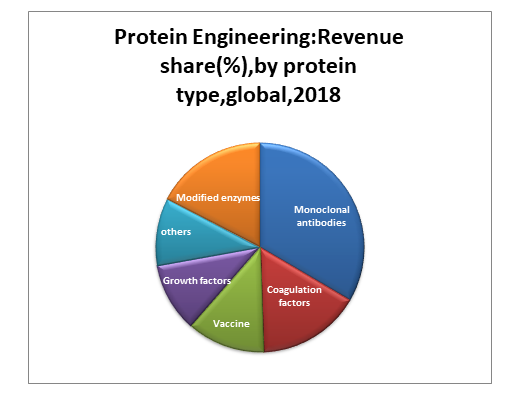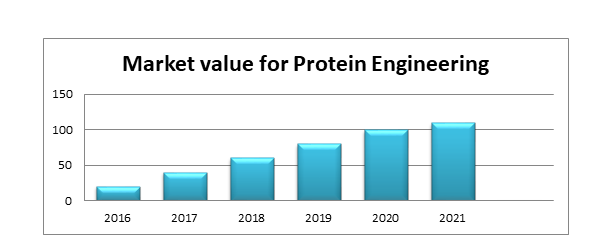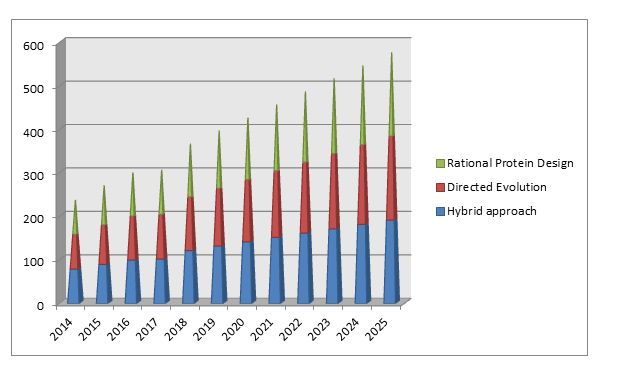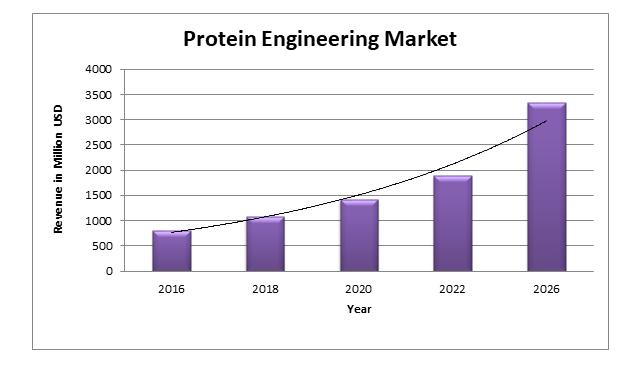Theme: Theme: Moving forward to the future of life sciences
Protein Engg Meet 2020
Protein Engg Meet 2020 cordially welcomes all the participants and contributors from worldwide to attend “4th International Conference on Protein Engineering ” during August, 2020 .The conference will be organized around the theme “Moving forward to the future of life sciences.”
A scientific program which is well organized to the audience which includes symposiums, workshops, keynote lectures, plenary talks, oral talks, panel discussions and poster sessions on latest research, new methodologies and technological developments in the arena of proteomics as well as bioinformatics aspects. The main aim is to engage participants on wider issues, such as teaching in the proteomics as well as bioinformatics research.
Protein engineering is the longest running independent life science events with a predominantly academic client base. It is important to note that while this conference focuses on Protein, Genetic, and Enzyme Engineering, Structure and Function of Proteins, Genomics & Structural Genomics, Protein Engineered Biomaterials, Proteomics in Plant & Animal, Pharmacogenomics & Pharmacoproteomics, Mass Spectrometry in Proteome Research, Transcriptome analysis & Gene Expression, Protein Biochemistry, Antibody Drug Therapy, Protein Therapeutics & Market Analysis, Molecular Modelling and Drug Designing, Bioinformatics and Computational Biology, Applications of Genetic and Protein Engineering, Machine Learning Applications in Bioinformatics and other techniques. This conference is open to all interested parties who feel they have something to contribute and has a strong emphasis on support and inspiration for the next generation scientists, researchers, and activities to encourage interaction with peers and experts. Gathering of the proteomics and bioinformatics life sciences for research presentation, discussion, learning, inspiration and encouragement with participants leaving with new research knowledge and ideas, and perhaps the beginnings of international collaborations and friendships and the learning of new thoughts among the experts, industrialists and understudies from investigating the region of biotechnology to showcase their research globally & enhance their knowledge & skills in the field of Biotechnology for novel research and discoveries.
Target Audience:
- Protein and Genetic Research laboratory Heads
- Researchers
- Practitioners
- Doctors
- Scientists
- Health care experts
- Nutritionists/Dieticians
- Physicians
- Health care analysts
- Professors
- Students
- Research Institutes
- Business delegates
- Young Researchers
- Advertising and Promotion Agency Executives
- Professionals in media sector
- Medical colleges
- Medical & Pharmaceutical Companies
- Medical devices & companies
- Health professionals
- Management/Business leaders and/or agents
- Government/non-government community groups or individuals
Track 1: Protein Engineering
The conception and production of unnatural polypeptides, often through modification of amino acid sequences that are found in nature is protein engineering. The structures and functions of synthetic protein can now be designed entirely on a computer or produced through directed evolution in the laboratory.
- Protein engineering design and selection
- In vitro evolution of proteins
- Advances in engineering proteins for biocatalysis
- Constructing functional biocatalysts
- Aspects of biocatalysis
- Growth of synthetic biology
- Protein folding
- Membrane proteins
- Plant and Human Genetics
- Retrometabolic drug design
- Computational protein engineering
Track 2: Genetic Engineering
Genetic adjustment also called Genetic engineering, is the immediate control of a living beings genome utilizing biotechnology. It is an arrangement of innovations used to change the genetic makeup of cells, comprising the exchange of genes within and across species boundaries to produce improved or novel organisms. The diverse points secured under genetic engineering are Genetic adjustment, Genome investigation, Genetic designing strategies, Molecular docking & computational transformative science.
- Genetic modification
- Molecular docking and computational evolutionary biology
- Applications of genomics
- Genome analysis
- Genetic engineering techniques
- Machine learning in molecular systems biology
- Current challenges in modeling cellular metabolism
- Plant Biotechnology, Plant Genetics and its developments
- Molecular Genetics and Microbiology
- Plant and Human Genetics
- Genetic and molecular basis of crop improvement
- Molecular Markers
- Transgenics
Track 3 : Enzyme Engineering
The application of genetic engineering techniques to enzyme technology is Enzyme engineering. Genetic engineering may be improved or altered through number of properties including the production and kinetics of the enzyme, structure of the enzymes, Structure of the enzymes, De novo design, Intersection of protein engineering and next-generation sequencing, Rational alteration of enzyme function, Combinatorial Enzyme Engineering & Enzyme and biosensor Engineering.
- Structure of the enzymes
- De novo design
- Intersection of protein engineering and next-generation sequencing
- Rational alteration of enzyme function
- Combinatorial enzyme engineering
- Enzyme and biosensor Engineering
Track 4: Structure and Function of Proteins
The three-dimensional arrangement of atoms in an amino acid-chain molecule is Protein structure. Polymers are proteins which specifically polypeptides and are formed from sequences of amino acids, and monomers of the polymer.
- Protein structure databases
- Protein Sequence Analysis
- Protein structure determination
- Protein folding
In many crucial biological processes and functions ,proteins play an important role They have many different functions in the body and are very versatile as listed below.
- Act as catalysts
- Transport other molecules
- Store other molecules
- Provide mechanical support
- Provide immune protection
- Generate movement
- Transmit nerve impulses
- Control cell growth and differentiation
The structure of proteins has an impact on their function to the extent is shown by the effect of changes in the structure of a protein. Including slight changes in the folding and shape of the protein may render it non-functional when any change in protein at any structural level.
Track 5: Genomics & Structural Genomics
The study of organism whole genomes and incorporating elements from genetics is Genomics. A combination of recombinant DNA, DNA sequencing methods, and bioinformatics to sequence, assemble, and analyse the structure and function of genomes is used by Genomics.
- Molecular and biomedical genetics
- Functional genomics
- Structural genomics
- Epigenomics
The field of genomics that involves the characterization of genome structures is Structural genomics. The practice of manipulating the genes and DNA segments of a species can be useful in this knowledge.
- Modelling Threading
- Structure databases
- Structural bioinformatics
- Traditional structural prediction
Track 6: Protein Engineered Biomaterials
Modern techniques includes recombinant signaling molecules, scaffolds of solid free form fabrication, synthetic cartilage, electrochemical deposition, spinal fusion and ossification are new generated techniques for tissue engineering applications with the growth factors availability and the increasing knowledge base concerning the bone generation.The foremost research which includes Nano applications to biomedical sciences and tissue engineering, Nano medicines, Cell interactions with Nano particles, Revolutionary opportunities and future possibility of nanotechnology, Bio-nanotechnology Biomedical Nanotechnology, Tissue Growing Nanostructures, Nano-Mechanisms for Molecular Systems, Nano-Bio-Computing, Biomedical Application of Nanoparticles and Functional Nanomaterials and Devices for Biomedical Engineering Research.
- Biomaterials in biomedical engineering
- Protein-biomaterial interactions
- Biomaterials design and technology
Track 7: Proteomics in Plant & Animal
Each living cell in proteome is dynamic, altering in response to the metabolic state and reception of intracellular and extracellular signal molecules of the individual cell. Many of the proteins which are expressed will be post-translationally altered. Thus the purpose of the proteome analysis is to aid the understanding and interaction of the protein function, then it is the identification of the proteins in their final state which is required. The essential of Individual proteins is by mass spectrometric identification, indicating site and nature of medication.
- Gel based proteomics
- Shotgun proteomics
- Salinity Tolerance
- Photosynthesis
- Late-Embryogenesis Abundant (LEA) Proteins
Track 8: Pharmacogenomics & Pharmacoproteomics
The study of the genome role in drug response is Pharmacogenomics. The combination of pharmacology and genomics reflects its name. The genetic makeup of an individual affects response to drugs is analysed by Pharmacogenomics.
- Drug-metabolizing enzymes
- Predictive prescribing
- Clinical implementation
- Polypharmacy
Rapid advancing field is Pharmacoproteomics in which the techniques of proteomics are applied to develop pharmaceutical agents. Personalized medicine plays a major role in this branch of study. Proteomics being the full complement of proteins expresses by an organism or tissue under specified conditions at a specified time.The effect of disease or drugs can substitute for much more complex assays in pharmacodynamics at a lower cost in time,financial output,and clinical risk in the study is the full set of proteins usage.
Track 9: Mass Spectrometry in Proteome Research
The utilization of mass spectrometry to the study of proteins is Protein mass spectrometry. Characterization of proteins is the important emerging method for Mass spectrometry. Cellular protein maps generation can be used in two-dimensional gel electrophoresis which give a quantitative and qualitative picture of the proteome. The method of choice for the rapid large-scale identification of these proteomes and their alterations is mass spectrometry. The mass spectrometry data to experimentally validate gene products and to assist in the process of genome annotation and comparison is used in Proteogenomics.
- Electrospray ionization mass spectrometry (ESI-MS)
- Matrix-Assisted laser desorption (MALDI-TOF-MS)
- Liquid chromatography mass spectrometry (LC-MS)
- Multidimensional protein identification technology
- Protein identification and validation
Track 10: Transcriptome analysis & Gene Expression
The first and important topics to be discussed is Transcriptome and gene expression. It can be achieved by gaining proper knowledge about functioning of mRNA, tRNA and rRNA. Subset of relevant target genes can be focused in Gene expression analysis experimentations. Through Sequence mapping, the location of gene and relative distances between genes on a chromosome can be determined. Transcriptome can be created using de novo transcriptome assembly method even in the lack of reference genome.
- Transcriptomes of stem cells and cancer cells
- The role of micro RNA (mi RNA) and small interfering RNA ( si RNA)
- Functioning of mRNA, tRNA and rRNA
- Cellular differentiation and carcinogenesis
- Serial analysis of gene expression
- Transcriptomic and proteomic profiling
- Transcription of gene
Track 11: Protein Biochemistry
The one of the chief classes of molecules studied in biochemistry and primary constituent of living things are Proteins. It provides the cell molecular machinery the most. Many are the enzymes or enzymes subunits. The struts form and joints of the cytoskeleton plays structural or mechanical roles in other proteins. The linear polymers in each protein is built of amino acids.
- Biochemistry of Metabolic syndromes
- Clinical gene therapy
- Nucleic acid based diagnosis
- Phytochemicals
Track 12 : Antibody Drug Therapy
The human antibody gene libraries and synthetic antibody libraries are also prominent subject in Antibody Engineering. Antibody Engineering is a field which fueled by Engineering bi-specific antibodies, phage and yeast display of antibodies, Bi-specific antibodies and combination therapy and antibodies for cancer therapy. They are exclusive in their specificity and high affinity for a binding paper, it is a quality that has made them one of the most useful molecules for biotechnology and biomedical applications.
- Engineering bi-specific antibodies
- Phage and yeast display of antibodies
- Bi specific antibodies & combination therapy
- Antibodies for cancer therapy
- Human antibody gene libraries
- Synthetic antibody libraries
Track 13: Protein Therapeutics & Market Analysis
The various applications and sources for Protein Therapeutics & Market Analysis are Protein Biomarkers, Recombinant protein drugs, Protein gold standards, Protein expression services and market analysis, Fusion protein therapeutics. It has a significant role in almost every field of medicine, but this role is still only in its infancy.
- Protein Biomarkers and its Diagnostics
- Recombinant protein drugs
- Protein gold standards
- Protein expression services and market analysis
- Fusion protein therapeutics
Track 14: Molecular Modelling and Drug Designing
Medical chemists has become a valuable and essential tool to Molecular modelling in drug design process. Molecules of three-dimensional structures in the generation, manipulation or representation and associated physio-chemical properties is designated in the molecular modelling.
- Molecular Modelling: Principles And Applications
- Molecular graphics
- Monte Carlo method and Molecular design software
- Drug development
- Retrometabolic drug design
Track 15: Bioinformatics and Computational Biology
The computational methods developments and applications are useful to analyse biological data like genetic sequences, protein samples or cell populations, developing new predictions or discovery of new biology which is an interdisciplinary field in bio informatics and computational biology. Analytical methods, mathematical modeling and simulation is used in computational methods.
- Data mining and Machine Learning
- Computational anatomy
- Artificial Intelligence
- Computational biomodelling
Track 16: Applications of Genetic and Protein Engineering
Mostly we are having good research and number of companies and projects and there are lot of applications used for protein like protein identification and validation, Protein modification, targeting and degradation, imaging mass spectrometry and profiling of tissue sections, protein profiling studies in diabetes, designer proteins and protein dietary supplements.
- Protein identification and validation
- Protein modification, targeting and degradation
- Chemical genetic methodology
- ECM proteins and protein fragments
- Advances in cell and gene therapy
- Novel methods in regenerative medicine
- Molecular Breeding for sustainable Agriculture
- Plant Breeding
Track 17: Machine Learning Applications in Bioinformatics
The development of algorithms that learned by making predictions based on data and has number of applications emerging in the field of bioinformatics in a computer science subfield is Machine learning. The computational and mathematical approaches for understanding and processing biological data was dealed by Bioinformatics.
- Microarrays
- Stroke Diagnosis
- Text mining
MARKET ANALYSIS OF PROTEIN ENGINEERING:
Protein Engg Meet 2020 is the great opportunity for researchers working with the new innovative techniques and researches in Protein Engineering. The process for the development of new proteins through directed evaluation and rational protein designing, which can be used as therapeutic agents is protein engineering. The arena of proteomics and nanotechnology development globally, rising incidences of chronic and autoimmune diseases, rise in the awareness among people regarding protein engineering, increasing focus on research and development process, development in drug delivery system, and in protein-based drugs of adoption rised over non-protein-based drugs are the prime growth drivers of protein engineering market. In protein engineering and its maintenance, higher cost of the research and development, higher cost of tools and instruments were used and complex government approval processes are the key restraints for protein engineering market.
Market Overview
In the agrochemical industry, Protein engineering holds an immense opportunity as engineering in proteins may lead to the generation of enzymes with improved function that may increase the crop yield or facilitate the biofuel production. A tool to attain increased crop yield needed to meet future demand is also likely to be played as an important role. The prevalence increasing of protein deficient diseases, adoption of protein drugs over non-protein drugs, demand for alternatives to chemical processes, and rising government funding for protein engineering are the propelling factors in the global protein engineering market.
A group of disorders that includes marasmus, kwashiorkor is Protein energy malnutrition (PEM). It is increasing in the rural areas of emerging economies. The protein deficient diseases is driving the overall market by increasing. The government initiatives is rising in number such as funding R&D for protein engineering and awareness programs, which have influenced the healthcare industry. Thus, the government is proactively investing in many of the research. Protein Technologies Ltd (PTL) has received funding from the UK government’s technology Strategy Board for its innovative research in protein engineering.
Scope of the Report
The process by which novel proteins with desired properties are developed, and has grown enormously since past three decades is protein engineering. A wide range of proteins tailored to specific health, industry, medicine, research, and biotechnology applications in the past few years have successfully generated by Protein engineers. The manipulation of the structures of proteins to produce the desired properties, or the synthesis of proteins with particular structures is protein engineering as per the scope of report.
|
By Product Type |
|
|
By Technology |
|
|
By End User |
|
|
Report Metric |
Details |
|
Market size available for years |
2017–2024 |
|
Base year considered |
2018 |
|
Forecast period |
2019–2024 |
|
Forecast units |
Values (USD Million/Billion) |
|
Segments covered |
Product & Service, Protein Type, Technology, End User, and Region |
|
Geographies covered |
North America (US, Canada), Europe (Germany, UK, France, RoE), APAC (Japan, China, India, RoAPAC), and RoW |
|
Top companies covered |
Bio-Rad Laboratories, Inc. (US), Thermo Fisher Scientific, Inc. (US), Bruker Corporation (US), Agilent Technologies, Inc. (US), Waters Corporation (US), Danaher Corporation (US), Codexis, Inc. (US), New England Biolabs, Inc. (US), PerkinElmer (US), Innovagen AB (Sweden), GE Healthcare (US), CUSABIO TECHNOLOGY LLC (US), Promega Corporation (US), Merck KGaA (Germany), GenScript Biotech Corporation (US), Takara Bio, Inc. (Japan), Enantis S.R.O. (Czech Republic), InvivoGen (US), Pace Analytical (US), Aspira Chemical (US), Zymeworks, Inc. (Canada), Abzena, Ltd. (UK), PhyNexus, Inc. (US), ProteoGenix (US), and Creative Biolabs (US) |
Market Report:
Market Value for Protein Engineering from the year 2016-2021: The demand for protein engineering has been increasing from year to year. The market of protein engineering is predicted to grow at a 6.2% CAGR between 2017- 2023.

U.S. protein engineering market by technology, 2014 - 2025 (USD Million)
Top Universities in Worldwide
- California Institute of Technology (Caltech)
- University of Oxford
- Stanford University
- Massachusetts Institute of Technology (MIT)
- Princeton University
- University of Cambridge
- University of California, Berkeley
- European Association of Pharma Biotechnology (EAPB)
- European Federation of Biotechnology
Major Protein Engineering Societies
- The American Physiological Society
- American Society for Biochemistry and Molecular Biology
- American Society for Pharmacology and Experimental Therapeutics
- American Society for Investigative Pathology
- American Society for Nutrition
- The American Association of Immunologists
- American Association of Anatomists
- The Protein Society
- Society for Developmental Biology
- American Peptide Society
- Association of Biomolecular Resource Facilities
- The American Society for Bone and Mineral Research
- American Society for Clinical Investigation
- Society for the Study of Reproduction
- Teratology Society
- The Endocrine Society
- The American Society of Human Genetics
- Society for Gynecologic Investigation
- Environmental Mutagen Society
- International Society for Computational Biology
- American College of Sports Medicine
Worlds Major Protein Engineering Societies
- The Antibody Society
- African Society for Bioinformatics and Computational Biology
- Biochemical society
- Royal Society of Chemistry
- International Federation for Cell Biology
- Federation of American Societies for Experimental Biology
- Academy of Nutrition and Dietetics
- Atlanta dietetic association
- Institute for Electronics and Nanotechnology
- Georgia Institute of Technology
- College of Engineering
- Georgia State University
Related Conferences :
- 31st European Congress On Nanotechnology And Materials Engineering February 12-13, 2020 Paris, France
- 15th International Conference On Tissue Engineering And Regenerative Medicine March 18-19, 2020 Paris, France
- Food Engineering 2019 June 28-30 2020 London, Singapore
- 26th International Conference On Advanced Materials, Nanotechnology And Engineering June 22-23, 2020 Brisbane, Australia
- 34th International Conference On Nanoscience, Nanotechnology And Nanoengineering June 26-27, 2020 Paris, France
- 21st International Conference And Exhibition On Materials Science, Nanotechnology And Engineering September 21-22, 2020 Milan, Italy
- International Conference On Biomaterials For Bone Tissue Engineering September 28-29, 2020 Abu Dhabi, UAE
- 6th International Conference On Enzymology And Protein Chemistry September 28-29, 2020 Barcelona, Spain
- 14th International Conference On Tissue Engineering & Regenerative Medicine October 07- 08, 2020 Vienna, Austria
- 11th Asia Pacific Conference On Polymer Science And Engineering October 22-23, 2020 Tokyo, Japan
Conference Highlights
- Pharmacogenomics & Pharmacoproteomics
- Mass Spectrometry in Proteome Research
- Transcriptome Analysis & Gene Expression
- Protein Engineering
- Genetic Engineering
- Enzyme Engineering
- Structure and Function of Proteins
- Genomics & Structural Genomics
- Protein Engineered Biomaterials
- Proteomics in Plant & Animal
- Protein Biochemistry
- Antibody Drug Therapy
- Protein Therapeutics & Market Analysis
- Molecular Modelling and Drug Designing
- Bioinformatics and Computational Biology
- Applications of Genetics and Protein Engineering
- Machine Learning Applications in Bioinformatics
To share your views and research, please click here to register for the Conference.
To Collaborate Scientific Professionals around the World
| Conference Date | July 13-14, 2020 | ||
| Sponsors & Exhibitors |
|
||
| Speaker Opportunity Closed | |||
| Poster Opportunity Closed | Click Here to View | ||
Useful Links
Special Issues
All accepted abstracts will be published in respective Our International Journals.
- Journal of Proteomics & Bioinformatics
- Journal of Pharmacogenomics & Pharmacoproteomics
- Journal of Data Mining in Genomics & Proteomics
Abstracts will be provided with Digital Object Identifier by















